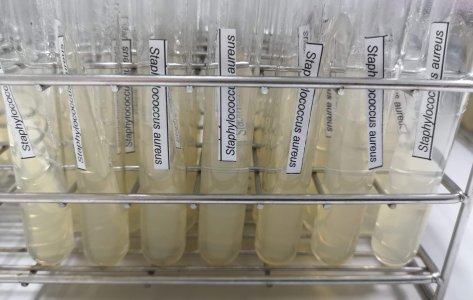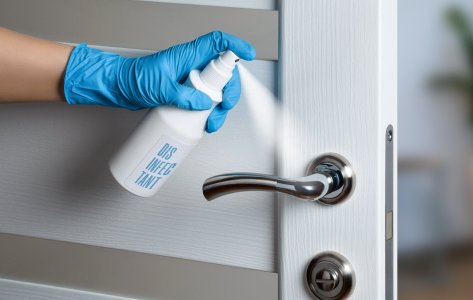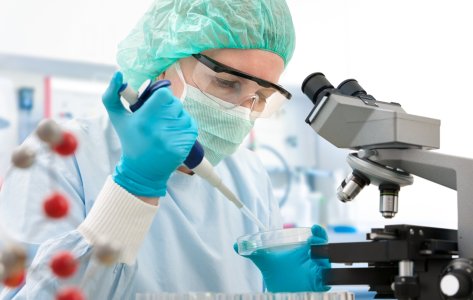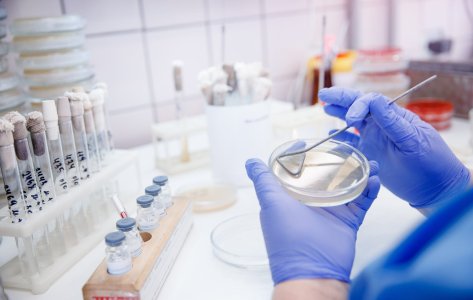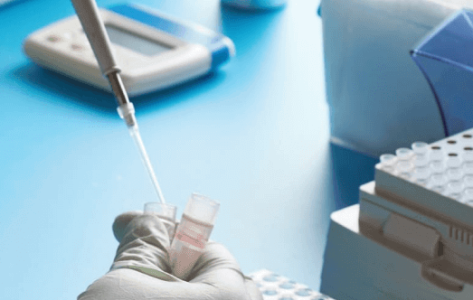- Swiss testing laboratory
EPA #01-01A

Hassle-free testing experience
Need to get a product tested? No worries! To and fro logistics are on us; we collect your products, test them and, deliver them back to you.
Related tests for you
Quick understanding of the test
EPA #01-01A - Standard Method for the Evaluation of Residual Self-Sanitising Activity of Dried Chemical Residues on Hard, Non-Porous Surfaces
Application
Mandatory test strains
- Staphylococcus aureus
- Klebsiella pneumoniae or Enterobacter aerogenes
- Carriers are coated with the test product and subsequently inoculated with the test organism.
- Inoculated carriers are subjected to alternating wet and dry abrasion treatment.
- After treatment, the carriers are re-inoculated with the test microorganisms and dried.
- After reinoculation, the carriers are challenged with test microorganisms and soil load for a specific contact time.
- After the contact time, the test specimen is neutralized and the surviving microorganisms are recovered and quantified.
- Tests the product efficacy under simulated usage conditions.
- Supports long-term residual claims for the sanitizing activity of the antimicrobial surface coatings.
Turnaround Time
Passing criteria
Do you have a product that needs testing?
Abstract
EPA #01-01A Test determines the residual sanitizing efficacy of antimicrobial products applied onto hard, non-porous contact surfaces against test bacteria. The method is used to assess the residual sanitizing efficacy upon mechanical abrasion of the coatings on the hard, non-porous surfaces against microbes such as Staphylococcus aureus (ATCC 6538), Klebsiella pneumoniae (ATCC 4352), Enterobacter aerogenes (ATCC 13048), Escherichia coli 0157:H7 and Salmonella cholerasuis. However, the method can also be adapted to test against other bacterial strains as well.
EPA #01-01A Test Method is divided into two parts

Part 1: Preparation and Abrasion Treatment
- Glass, metal, and plastic carriers are coated with the test product for a minimum of 3 hrs and act as the test specimens. Uncoated glass, metal, and plastic carriers act as controls for each material respectively.
- The carriers are inoculated with the test microorganism culture that is 48-56 hr old.
- All carriers then undergo an alternating wet and dry abrasion treatment over a 24-hour duration.
- Each treatment lasts for 15 minutes and is followed by a 15-minute rest period, after which the carriers are re-inoculated with the test microorganism, followed by a 30-minute drying period.
- A total of 12 wear cycles and 5 re-inoculations are performed for each test microorganism.
Part 2: Product efficacy
- Following the completion of the abrasion and reinoculation treatment, the carriers are challenged with a 10μL inoculum of the test microorganism and soil load for a contact time of 5 minutes.
- After the contact time, the antimicrobial action of the test specimen is neutralized using a neutralizing media, and the surviving test organism is recovered.
- The number of viable microorganisms recovered from the controls (uncoated and unabraded) and test specimens (coated and aberrated) is determined quantitatively.
- The number of viable microorganisms on treated and abraded carriers is compared to the untreated control carriers and the residual sanitizing efficacy is determined in the form of log reduction.
A test product on the carriers must reduce the total number of microorganisms by at least 99% on the carrier surface
Importance of the test
EPA #01-01A testing provides supporting efficacy data for long-term residual claims for the sanitizing activity of the antimicrobial surface coating of hard, non-porous surface products. This method applies to products used on inanimate, non-food contact hard surfaces. These products may be sprayed or applied otherwise. The abrasion treatment represents normal wear and tear when exposed to biocidal materials.
Conclusion
Here at MIS, we develop and optimize test protocols for EPA #01-01A which comply with international standards and appropriate safety protocols are followed while testing surface coatings against human pathogenic microorganisms.
MIS also offers a test for evaluating the efficacy of antimicrobial surface coatings (EPA MLB SOP MB-40) and for hard non-porous Copper-containing surface products (EPA MLB SOP MB-41)
Frequently Asked Questions

DR. Martinoz Scholtz
It is a test that evaluates the residual sanitizing efficacy of antimicrobial products applied to non-porous, contact hard surfaces.
Products used on inanimate, non-food contact hard surfaces can be tested for residual sanitizing activity using this method.
The test is completed in 2-3 weeks.
At present, Staphylococcus aureus, Klebsiella pneumoniae, Enterobacter aerogenes, Escherichia coli, and Salmonella cholerasuis can be tested. The test can be adapted for other microorganisms.
Meet the best of the blend of
R&D, Efficacy Testing,
Innovation and Passionate
Experts at MIS.





Explore More
Did you know there are
Antibacterial testing of disinfectants plays
Antimicrobial testing is important to
Antibacterial efficacy testing is an
Let’s face it, we are
